Where to Stay in Glasgow – A Guide to “The Dear Green Place”
Glasgow is the most populous city in Scotland. Located on the banks of the River Clyde, in West Central Scotland, Glasgow grew from a small rural settlement to become Scotland’s largest seaport and richest city. Among other things, Glasgow is particularly famous for its world-class cultural institutions, historic and avant-garde architecture, music scene, sports clubs and as an important transport hub. In this post, we will discover the best areas to stay in Glasgow, Scotland.
Why you should visit Glasgow
Glasgow is considered one of the most important cultural hubs in Britain. This city is home to institutions including the Scottish Opera, the Scottish Ballet and the National Theatre of Scotland, as well as world-class museums like the Kelvingrove Art Gallery and Museum, the Hunterian Art Gallery and the Gallery of Modern Art, and a thriving music scene. Find accommodation in Central Glasgow.
The Clyde River area has been continuously inhabited for millennia and evidence of a fortified prehistoric village was found on the site. Later on, in the 1st century AD, the Romans built outposts to protect Roman Britannia from the Caledonians. However, it wasn’t until the sixth century, with the arrival of St. Mungo that Glasgow was founded. He established a small church where the cathedral now stands, and in the following centuries, Glasgow grew as a religious centre. By the 12th century, Glasgow was already one of the most important burghs in Scotland and became the seat of the Bishops and, later, the Archbishops of Glasgow. By the 15th century, with the founding of the University, Glasgow had become an important religious and academic city.
Glasgow’s ancient heart, where the city’s oldest historic buildings can be found, is located in the city’s present-day East End. This lovely old town quarter is home to several historical attractions including St Mungo’s Cathedral, High Street, Castle Street, Tron Steeple, the Glasgow Necropolis, Glasgow Green and the People’s Palace. Find accommodation in Old Glasgow.
By the 16th century, Glasgow’s merchant and craft guilds had begun to wield significant influence and the city started to become an important trading centre between the American colonies and the rest of Scotland. After the Acts of Union in 1707, Glasgow became a major port for the import of goods like tobacco, cotton and sugar, which were traded throughout Great Britain and the rest of Europe. The extensive trade of American products made “Tobacco Lords” very wealthy. They built lavish homes and funded spectacular buildings, churches and monuments that can still be seen today, especially around Merchant City. Find accommodation in Merchant City.
Located west of Charing Cross, Glasgow’s West End encompasses several of the city’s trendiest neighbourhoods. This area, known for its charming Victorian architecture, public parks and lively shopping and dining spots, is also home to some of Glasgow’s top museums and cultural attractions, including the Hunterian Museum and Art Gallery, the Kelvingrove Art Gallery and Museum, Mackintosh House or the Glasgow Botanic Gardens. Find accommodation in the West End.
In the last few decades, Glasgow has undergone a remarkable transformation to become one of the most exciting cities in Britain. Perhaps nowhere is Glasgow’s transformation more apparent than in its Clyde Waterfront districts. This massive regeneration project is turning the city’s old harbour area into a vibrant cultural, commercial and tourist hotspot. Some impressive landmarks in the area include The SEC Centre and SEC Armadillo, the Riverside Museum, the Tall Ship Glenlee and, on the other side of the river, the Glasgow Science Centre and Glasgow Tower. Find accommodation in Clyde Waterfront.
What’s the best time to visit Glasgow
Not unlike the rest of Scotland, Glasgow has an oceanic climate. Due to its westerly position and proximity to the Atlantic Ocean, the city experiences milder conditions than other places in the country. Glasgow faces cold and overcast winters and warm summers. The average temperatures in January are usually between 2 and 7 ºC. Meanwhile, July can see temperatures hover between 12 and 20 ºC. Precipitations are fairly common throughout the year. The best time to visit Glasgow is during the late spring and summer (May through September), when the pleasant temperatures are perfect for outdoor activities and sightseeing.
Glasgow: Getting there and around
To travel to Glasgow via air, the city is served by Glasgow International Airport (GLA). Located around 15 kilometres west of the city centre, this major British airport, the second busiest in Scotland after Edinburgh, offers frequent non-stop services to most cities in the UK, as well as dozens of European routes and a few long-haul connections, mainly to North America and the Middle East.
Glasgow is also well-connected to the rest of Scotland and England by train. Glasgow Central and Queen Street station are the two main railway terminals in the city. Glasgow Central offers connections to London Euston, Manchester, Birmingham, Bristol, Plymouth and several other destinations in England, as well as suburban services on the south side of Glasgow, Ayrshire and Inverclyde. Most of the other services within Scotland, including the mainline to Edinburgh, and services to Aberdeen, Dundee, Inverness and the Western Highlands operate from Queen Street station. Check train schedules, routes and fares. The main bus terminal in the city is Buchanan bus station.
To move around the city, Glasgow has one of the most comprehensive multi-modal public transport systems in the UK. The Glasgow Subway is the third-oldest metro system in the world. It forms one large circular loop and extends both north and south of the River Clyde. Glasgow also has a very extensive urban rail network offering rail services to most of the West of Scotland. The rail system is complemented by an extensive bus network, a bus rapid transit system called Clyde Fastlink, traditional taxis and ride-sharing apps. To explore the city’s outlying suburbs and the natural wonders around Glasgow, you may want to choose to rent a car for your stay.
Where to stay in Glasgow
The best area to stay in Glasgow is Glasgow Central. The City Centre is home to several cultural and historical attractions, business centres, shopping and nightlife areas. Glasgow City Centre is also where some of the top-rated hotels are located and it offers the best transport connections. Find accommodation in Glasgow City Centre.
Other excellent districts to keep in mind when choosing the best areas to stay in Glasgow for sightseeing include Sauchiehall Street, the West End, Merchant City, the East End, Learning Quarter, Scottish Event Campus, South Glasgow and Glasgow Airport.
Continue reading to learn more about the best areas to stay in Glasgow, Scotland.

Found in an Edwardian building formerly home to the Anchor Line Shipping Company’s headquarters, this city-centre aparthotel is inspired by a 1920s ocean liner. With original 1906 features, there are glazed tiles, terrazzo flooring, timber wall-panelling, fireplaces and even the original safes.
The Best Areas to Stay in Glasgow, Scotland
1. Recommended area: Glasgow City Centre
Glasgow City Centre is the city’s main administrative, business and shopping district.
This bustling district located north of the River Clyde is home to museums, shopping centres, nightlife areas and the two principal transport hubs in Glasgow.
George Square is the principal civic square in the city. It is flanked by the impressive Glasgow City Chambers, a Beaux arts-style building seat of the municipal government.
The Gallery of Modern Art (GoMA), located on Queen Street, offers exhibitions by local and international artists such as John Bellany, Ken Currie, David Hockney, Sebastião Salgado and Andy Warhol.
Argyle Street, one of Glasgow’s most iconic shopping thoroughfares, crosses the city centre east to west and contains several large British and international retailers (Marks and Spencer, Zara, Primark…), shopping malls like the St. Enoch Centre and the victorian-era Argyll Arcade, and several mid-range and high-end hotels.
Running north from Argyle Street is Buchanan Street. An upmarket shopping, dining and nightlife strip home to the Buchanan Galleries.
Glasgow’s two major transportation hubs; Central and Queen Street stations are both located in the city centre. Buchanan Bus Station is situated a 10-minute walk north of Queen Street.
The City Centre is also the best area to stay in Glasgow for business travellers. Glasgow’s financial district, known officially as the International Financial Services District (IFSD), situated on the central stretch of the River Clyde, is one of the largest and busiest financial quarters in the UK.
As is to be expected, the City Centre also offers the widest selection of accommodation options in Glasgow. While this district is primarily known for its luxury and business-oriented hotels, central Glasgow is also home to a few cheaper alternatives.
We have chosen the City Centre as the best area to stay in Glasgow thanks to its perfect mix of attractions, shopping and nightlife options, and transport connections.
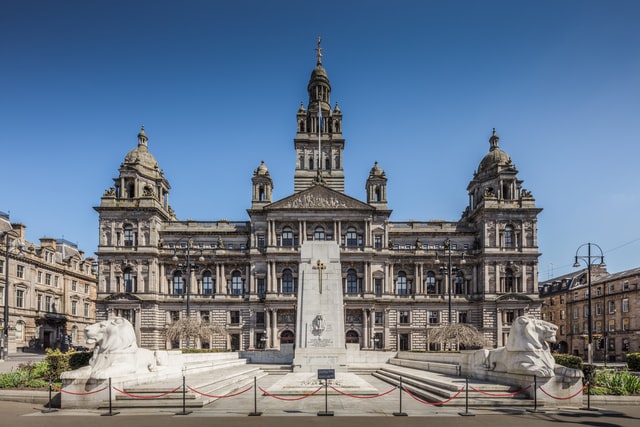



Why is this a recommended area to stay in Glasgow, Scotland:
- Museums and art galleries
- George Square
- Shopping streets and malls
- Main train stations
- Very well-connected by public transport
- Great luxury and business hotels
Accommodation in this area
-
Top Choice

Hotel Indigo Glasgow, an IHG Hotel
With a stylish restaurant and bar, Hotel Indigo Glasgow offers boutique rooms with free Wi-Fi and luxury bathrooms. In Glasgow centre, the hotel is just 500 m from Glasgow Central Station.
-
Budget
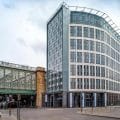
Motel One Glasgow
Boasting an excellent location in Glasgow city centre, Motel One Glasgow is next to Central Train Station and is only a 9-minute walk from George Square and Queen Street Train Station.
-
Luxury

voco Grand Central – Glasgow, an IHG Hotel
Located at Glasgow Central Station, the award-winning voco Grand Central – Glasgow is an iconic hotel set within Glasgow’s shopping district. It boasts a fine restaurant, free WiFi and 21 meeting rooms for up to 500 guests. The historic building dates back to 1883 and includes original features.
2. Sauchiehall Street
Sauchiehall Street is one of the main shopping, entertainment, dining and nightlife streets in Glasgow.
While it is mostly associated with the city centre, Sauchiehall Street actually spans 2.4 kilometres, from Buchanan Street to Kelvingrove Park in the West End.
Thanks to its variety of entertainment venues and theatres, Sauchiehall Street has been one of the most famous streets in Glasgow since Victorian times and became home to a number of notable buildings by renowned architects.
At the eastern end of Sauchiehall Street is the Glasgow Royal Concert Hall and Buchanan Galleries. Pedestrianised in the late 1970s, this section of Sauchiehall Street consists primarily of commercial development.
On nearby Renfrew Street is the Royal Conservatoire of Scotland.
In the past years, the central stretch of this lively street has been transformed and regenerated to incorporate a two-way cycle lane, trees, shrubs and free Wi-Fi throughout.
The section around Charing Cross holds a great variety of restaurants, bars and nightclubs and is considered the best area to stay in Glasgow for nightlife.
Other landmarks in this area include the Beresford Hotel, the Glasgow School of Art, the Glasgow Film Theatre, CCA Glasgow, the McLellan Galleries, the Royal Highland Fusiliers Museum and the Glasgow Dental Hospital and School.
To move to other Glasgow districts and beyond, this area is very well-connected through Charing Cross and Queen Street railway stations, Cowcaddens subway stop and Buchanan Bus Station.



Why is this a recommended area to stay in Glasgow, Scotland:
- Shopping areas
- Best area to stay in Glasgow for nightlife
- Well-connected by public transport
- Interesting architecture
Accommodation in this area
-
Top Choice

Holiday Inn – Glasgow – City Ctr Theatreland, an IHG Hotel
This 4-star Holiday Inn is located in the heart of Glasgow, just 50 m from the Royal Concert Hall. It offers bright, elegant rooms with modern bathrooms, unlimited free Wi-Fi and an award-winning restaurant.
-
Budget

ibis Glasgow City Centre – Sauchiehall St
In Glasgow’s vibrant centre, just 2 minutes from Sauchiehall Street, ibis Glasgow City Centre – Sauchiehall St is a short walk from Princes Square. It features a 24-hour front desk and a modern restaurant.
-
Luxury

Malmaison Glasgow
This converted church is a chic, modern 4-star hotel with a fine brasserie and stylish bar in Glasgow city centre, a short walk from the shops on Sauchiehall Street and the city’s business district.
3. West End
Spreading west from Charing Cross, Glasgow’s West End is known for its historical buildings, shady squares, impressive parks and gardens, and being home to some of the top-rated Glasgow attractions.
This massive Glasgow district is made up of several smaller areas including Kelvingrove, Woodlands, Hillhead, Hyndland and Partick. The West End is also home to the University of Glasgow.
Founded in 1451, the University of Glasgow is the fourth-oldest university in Great Britain. Its main campus, located in Gilmorehill and opened in 1870, is a stunning example of neo-gothic architecture and is thought to be the real-life inspiration for Harry Potter’s Hogwarts School of Witchcraft and Wizardry.
Along with impressive halls and cloisters, the university is also home to the Hunterian Museum and Art Gallery. This multidisciplinary institution includes the Hunterian Museum, the Hunterian Art Gallery, the Mackintosh House, the Zoology Museum and the Anatomy Museum, all hosted in different buildings spread across campus.
Not far, Kelvingrove Park offers lovely gardens, bike paths, fountains and monuments. Created in 1852, the park is also the site of the Kelvingrove Art Gallery and Museum, home to one of the finest collections of arms and armour in the world, as well as a great natural history collection, Renaissance paintings, artefacts from ancient Egypt, and decorative arts.
Glasgow’s West End is one of the top shopping destinations in the city. Far from the high street retailers found in the city centre, the West End is home to a large collection of unique traders and local designer shops.
This district is a very well-connected area to stay in Glasgow. To move around, you can choose between several subway and railway stations and bus stops.



Why is this a recommended area to stay in Glasgow, Scotland:
- Hipster area of Glasgow
- Unique shopping and alternative nightlife
- Well-connected by public transport
- University of Glasgow & Hunterian Museum
- Kelvingrove Park & Kelvingrove Museum
Accommodation in this area
-
Top Choice

Acorn Hotel
The Acorn Hotel offers boutique, 3-star accommodation situated between Glasgow City Centre and the West End. Located next to the picturesque Kelvingrove Park, this hotel has a bar, and is a 5-minute walk from the shops of Sauchiehall Street.
-
Budget

OYO Beersbridge Lodge
Featuring a shared lounge, OYO Beersbridge Lodge offers rooms in Glasgow, 500 m from Kelvingrove Art Gallery and Museum and less than 1 km from Sauchiehall Street. Guest rooms are equipped with a microwave, toaster, a kettle, a shower, a hairdryer and a wardrobe.
-
Luxury

Hilton Glasgow
In Glasgow city centre, the Hilton Glasgow Hotel is set in the heart of the financial district, within walking distance from the main shopping area of the city and with easy access to transport links and the Scottish Exhibition & Conference Centre (SEC).
4. Merchant City
Located directly east of George Square and Glasgow City Chambers, the Merchant City is one of the best districts to stay in Glasgow.
The area’s oldest section can be found in Glasgow Cross, at the junction of High Street, Trongate and Saltmarket. The Tron Steeple is one of the few remaining pre-Victorian buildings still standing in Glasgow.
While some of its parts date from the medieval period, Merchant City proper was developed from the 1750s onwards, when Glasgow began to become one of the main hubs of transatlantic trade with North America and the West Indies in Britain.
As commerce developed, the wealthy “tobacco lords” (who made their money by importing tobacco, sugar and tea through indentured and slave workers) began building residences and warehouses in the area. By the 19th century, this first “New Town” had blossomed into a major industrial, commercial and residential centre.
Today, Merchant City is one of Glasgow’s most lively districts. In the last decades, many of the old warehouses have been turned into trendy hotels, boutiques, bars and restaurants.
Merchant City is also home to several attractions including the former Royal Exchange at Queen Street, the Gallery of Modern Art, City Halls, The Old Fruitmarket, Merchant Square, and the Scottish Youth Theatre.
In order to move around, Merchant City is so central that you can basically just walk anywhere. Furthermore, the area is home to (or within walking distance of) several stations including Argyle Street, Glasgow Central, Queen Street and High Street.



Why is this a recommended area to stay in Glasgow, Scotland:
- Central area to stay in Glasgow
- Shopping and nightlife areas
- Well-connected by public transport
Accommodation in this area
-
Top Choice

ibis Styles Glasgow Centre George Square
Ibis Styles Glasgow Centre George Square offers accommodation in Glasgow, just a 7-minute walk from Glasgow Central Train Station. Guests can enjoy the on-site restaurant.
-
Budget

Brunswick Merchant City Hotel
The stylish Brunswick is a modern hotel with 23 en suite rooms and unique architecture. It is located in Merchant City, a cultural area in central Glasgow, close to George Square.
-
Luxury

Fraser Suites Glasgow
Set in a 19th-century renovated bank, the Fraser Suites are just 500 m from Argyle Street, one of Glasgow’s main shopping streets. Satellite TV are provided in all apartments, which are located in Glasgow’s cultural quarter, Merchant City.
5. East End & Learning Quarter
Glasgow’s East End, as its name implies, is situated east of the city centre.
Centred around High and Castle streets, this lovely district contains Glasgow’s ancient heart. This was the place where Christian missionary Saint Mungo established the church around which the city of Glasgow developed.
St Mungo’s Cathedral, founded in the 12th century, is the oldest cathedral in mainland Scotland and the oldest building in Glasgow. The gothic cathedral is one of the most visited tourist attractions in Glasgow and has been featured in several films, including Outlander and The Batman. Next to the cathedral is the St. Mungo Museum Of Religious Life & Art.
Overlooking the Cathedral is Glasgow Necropolis, a gorgeous Victorian garden cemetery. This serene burial place offers monuments and sculptures, as well as panoramic views over the city.
Nearby is the University of Strathclyde’s John Anderson Campus. Founded in 1796 as the Andersonian Institute, it is Glasgow’s second-oldest university and Scotland’s third-largest university by number of students.
High Street and Saltmarker connect Glasgow’s old town and the River Clyde. Not far lies Glasgow Green, one of the oldest public parks in Scotland. This impressive garden is home to the People’s Palace, where you can learn about the city’s industrial past and social history. Next to the palace are the Winter Gardens, a large Victorian glasshouse with a cafe, a water garden and assorted tropical plants.
A few hundred metres down London Road is the Barras, the city’s largest and most popular weekend market.
The most convenient railway station to move between the East End and the rest of Glasgow is High Street.



Why is this a recommended area to stay in Glasgow, Scotland:
- Glasgow Old Town
- Glasgow Green & People’s Palace
- Glasgow Cathedral
6. Scottish Event Campus
The Scottish Event Campus, previously known as the Scottish Exhibition and Conference Centre, is Scotland’s largest event centre.
Located at the former Queen’s Dock, on the north bank of the River Clyde, the Event Campus is home to the SEC Centre, SEC Armadillo (formerly Clyde Auditorium), and SSE Hydro.
Since the opening of the original buildings in 1985, the complex has undergone major expansions to become one of the most recognisable landmarks of Glasgow.
While SEC is used year-round for several professional trade shows, congresses, conferences and sporting competitions, it is best known for hosting large-scale concerts and music festivals.
Directly across the river is the Glasgow Science Centre, a science and technology museum with interactive exhibits, complete with a planetarium and an IMAX theatre. Next to it, Glasgow Tower holds the Guinness World Record for the tallest fully rotating freestanding structure in the world.
Other attractions nearby include the Riverside Museum; with collections of historic vehicles, and The Tall Ship Glenlee; a restored Victorian sailing ship.
The Exhibition Centre and Partick railway stations provide easy access from this area to the city centre.
Thanks to the many events constantly taking place at SEC, the accommodation offer around this district is very wide. The Exhibition Centre area offers many business-oriented hotels of different categories.



Why is this a recommended area to stay in Glasgow, Scotland:
- Great area for business travellers
- Best place to stay for a concert or event
- Excellent business hotels
Accommodation in this area
-
Top Choice

Hilton Garden Inn Glasgow City Centre
Set on the banks of the River Clyde, Hilton Garden Inn offers rooms with views and free WiFi access. The Scottish Exhibition and Conference Centre and SSE Hydro are both 2 minutes’ walk away, while Glasgow city centre is 10 minutes’ from this Hilton.
-
Budget

Campanile Hotel Glasgow SECC Hydro
Near the SECC conference centre and Scottish Hydro Arena, Campanile Glasgow has modern rooms 0.8 km from the M8 motorway. There is free parking and 2 rail stations close by.
-
Luxury

Crowne Plaza Glasgow, an IHG Hotel
Only a few minutes’ walk from the SEC campus, the 4-star Crowne Plaza Glasgow overlooks the River Clyde. It has a leisure club with a pool and spa, as well as a maritime-inspired restaurant and bar.
7. Southside
South Glasgow includes all the city areas situated south of the River Clyde.
The Southside is known for its lovely shady parks, stately mansions turned into museums and leafy residential areas.
The House for an Art Lover is no doubt one of the area’s best tourist attractions. This country house and arts centre was built between 1989 and 1996 and based on a 1901 design by Charles Rennie Mackintosh with his wife, Margaret MacDonald. The House for an Art Lover is a prominent example of British Art Nouveau style and hosts art exhibitions and other events.
Tramway, located near Pollokshields East railway station, is a contemporary arts venue hosting visual and performance art, music, film and theatre.
Pollok Country Park is Glasgow’s largest green space and the site of Pollok House, an Edwardian country house with art masterpieces, period furniture and scenic grounds.
Accommodation in this area
-
Top Choice

GoGlasgow Urban Hotel by Compass Hospitality
Located just off the M8 and an 8-minute walk from the Ibrox Stadium, GoGlasgow Urban Hotel offers en-suite accommodation with satellite TVs and free parking.
-
Budget
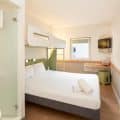
ibis budget Glasgow
In Springfield Quay, the ibis budget Glasgow is 10 minutes’ walk from the centre of Glasgow. It is surrounded by restaurants and leisure facilities, including a 12-screen cinema, bowling and a casino. WiFi is available in all areas free of charge.
-
Luxury

Sherbrooke Castle Hotel
Sherbrooke Castle Hotel is situated on the south side of Glasgow in the stunning surroundings of Pollokshields. It is an ideal location for both business and leisure guests and as a wedding venue.
8. Glasgow Airport
Glasgow Airport is an international airport located in Paisley, Renfrewshire, 15.9 km west of Glasgow city centre.
The second-busiest airport in Scotland after Edinburgh Airport, Glasgow is a major base for British Airways, EasyJet, Loganair, Jet2 and TUI Airways.
Glasgow Airport offers hundreds of daily connections to places in the United Kingdom, Ireland and continental Europe, as well as a handful of long-haul flights to North America (Toronto, New York City, Halifax, Cancún and Orlando) and the Middle East.
Read in other languages:


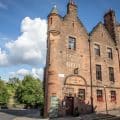


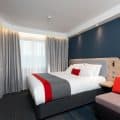


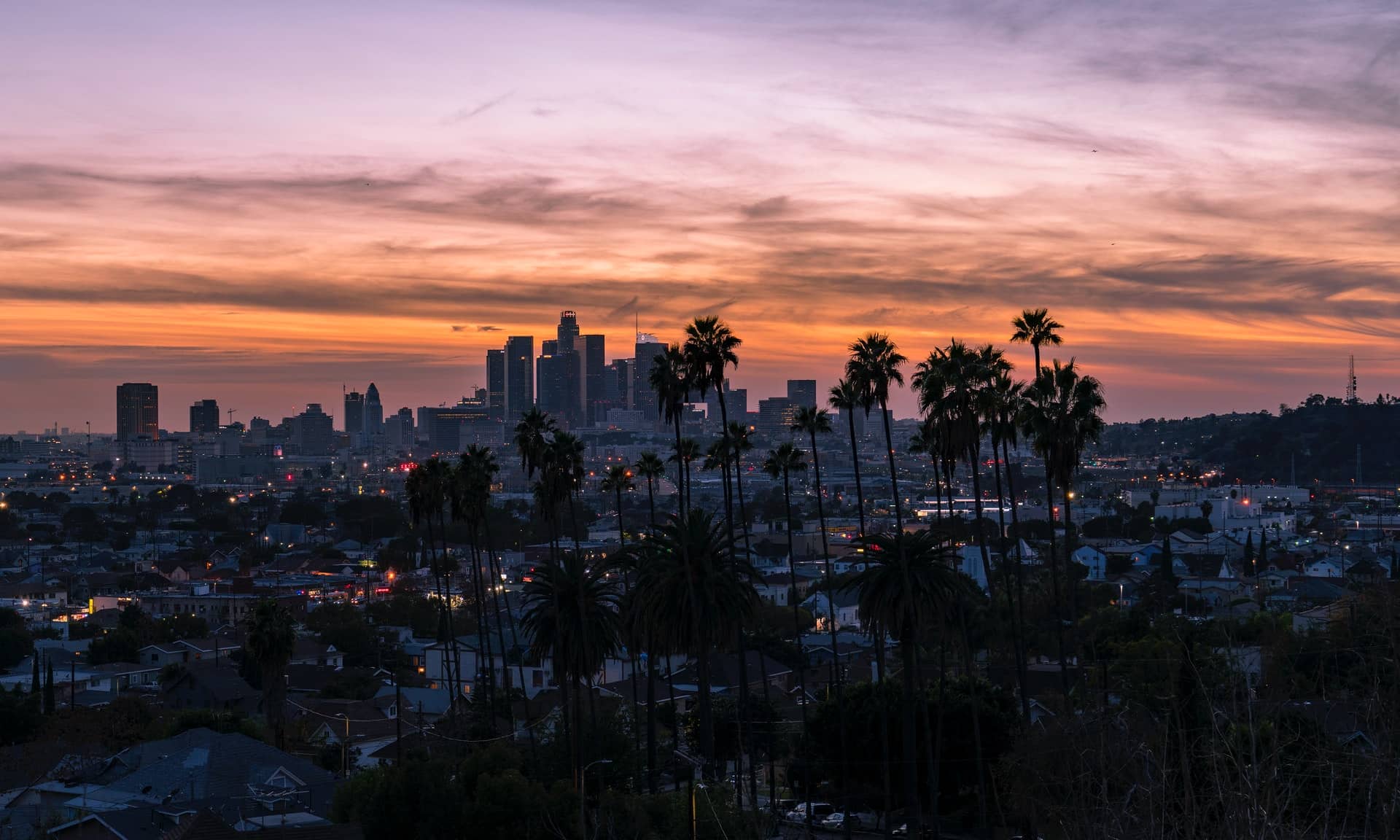

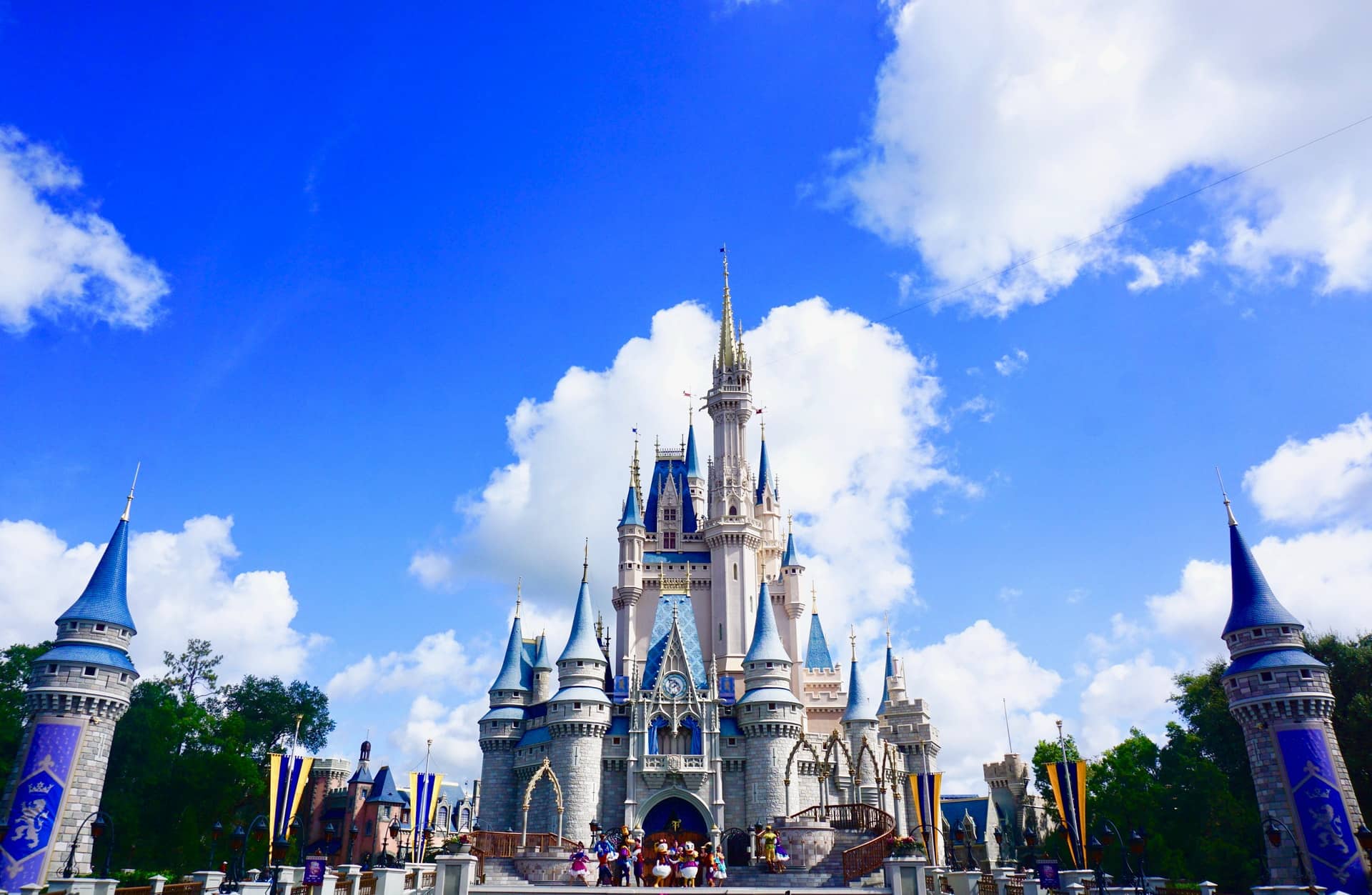








Leave a Reply
View Comments